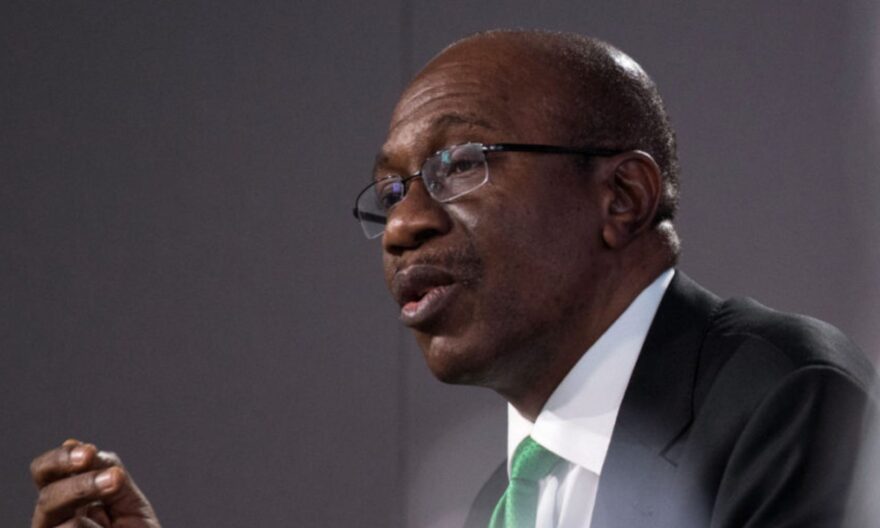
The Central Bank of Nigeria (CBN) has released Open Baking regulation followed by its framework, and according to professionals, through the Open Banking regulations, FinTechs can now help you to view all your bank accounts in one central location.
JOIN US FOR MORE ON:
or
or Follow us on WhatsApp Channel
The Central Bank of Nigeria (CBN) continues to enhance the payments and financial markets infrastructure in Nigeria by facilitating innovations that produce exciting and world-leading payment services and solutions.
What is Open Banking?
In its simplest forms, the objective of Open Banking is to have a payments and markets infrastructure which provides end-users with the ability to review ALL their banking and financial information in a CENTRAL location.
This is regardless of how many bank accounts they use, and which financial institution is used.
As an example, almost everyone in Nigeria has two or more accounts. You receive funds in multiple accounts and make expenditure across the same multiple accounts. When you need to track inflows, outflows, check your balances, reconcile customer payments etc., you must log into the separate banking products just to perform mundane clerical tasks.
Consequently, from an end-user perspective (think MSMEs, entrepreneurs, HNWI etc.), keeping track of your various inflows, outflows, balances, and due liabilities across all your suite of banking products is simply time-consuming.
Now imagine a product/service that allows you click on one simple dashboard and you see ALL your inflows, outflows, balances, and liabilities ACROSS ALL BANKS.
That is the aim of open banking. The implementation of Open Banking requires adoption of common standards for technology use, agreements on data sharing and regulatory guidelines.
Who else has open banking?
Most advanced countries already have a form of open banking in place (UK, UK, Europe, Japan, Singapore, China). However, in Africa Nigeria continues to pioneer innovative payments infrastructure solutions.
Benefits and Opportunities
The ability for end-users to view consolidated information about ALL their financial products across ALL authorized providers in a single location will yield productivity benefits for end-users whilst creating new opportunities for service providers.
Specifically, MSMEs; Sole-Entrepreneurs who leverage the output/solutions from Open banking will benefit from the convenience of having a consolidated view of their banking activities (i.e., balances, inflows, outflows etc.). Furthermore, the reduction of time-consuming manual and administrative efforts required during reconciliations will be a productivity benefit.
For Service providers, financial institutions will be able to sell more products (including cross-sell opportunities) as they gain more insights into their customers and worry less about overwhelming their customers with new accounts.
Think about platforms being able to suggest what insurance products or type of savings accounts your customers qualify for given the consolidated view of customer net worth.
One interesting opportunity is the potential for credit growth. A consolidated view of a customer’s net worth should allow Financial Institutions better analyze the creditworthiness of potential clients. Thus, align CBN’s financial inclusion objectives with its desire to increase credit to the real sector.
What happens next?
For those excitedly asking what happens next, i.e. when do these products start becoming widely available and easily accessible? The answer appears to be soon, especially as the CBN has finally published a regulatory framework.
Successful implementation of Open Banking is wholly dependent on collaboration between Technology providers (FinTech), Financial Institutions and the Regulator (CBN).
- From a Technology perspective, as mentioned before the capability already exists globally. Also from a Nigerian perspective the Open Banking Foundation of Nigeria has been a strong advocate.
- From the Financial Institutions perspective, SOME banks already have shown willingness to partner with FinTech to deliver a “LITE” version of Open banking.
As an example, Banks currently send SMS text messages which applications such as REACH APP can analyze and transform for insightful expense tracking.
- Finally, from the Banking Regulator perspective, the CBN release of a regulatory framework outlines how the CBN intends to supervise participants in this sector.
Specifically, the highlights of the open banking regulatory framework, the CBN aims to
a) Provide standards for the safe utilization and exchange of data and services. ,
b) Define data access levels (i.e. what bank data can be shared and who can get it)
- There are four data categories of what can be shared (PIST, MIT, PIFT, PAST)
- Each category of data is assigned a risk rating (Low risk, moderate-risk, high and sensitive-risk data)
- There are also four (4) groups of participants who can get your data (Tier 0, 1, 2 and Tier 3)
c) Establish scope of financial services
- In scope, for now, are Payments/remittance services; Collections and disbursement services; Deposit-taking; Credit; Personal Finance advisory and management; Treasury management; Credit ratings/scoring; Mortgages; Leasing/Hire-Purchase at this time.
In other words, the key stakeholders are now ready, and we simply await the collaboration necessary to deliver the desired outcome.
Why this matters
As part of its financial inclusion goals, as well as, payments system vision strategy (PSV 2020; PSV2030), CBN continues to welcome financial technology providers (FinTech) as key participants into the payments infrastructure in Nigeria.
- Recent entrants into this Payments infrastructure include Mobile Money Operators (MMOs such as PagaTech, eTranzact), as well as Payment Solutions Service Providers (PSSPs such as Paystack, Flutterwave).
- Each category of participants within the Payments infrastructure is preceded by the CBN releasing a regulatory framework. (as examples since 2010, we have seen Agent Banking Framework, Super Agents framework, Regulatory Framework for Mobile payments services in Nigeria amongst others).
- So, the recent announcement of an Open Banking Regulatory Framework created a buzz as it signals new entrants and new services are in the pipeline for the average consumer of banking services.
Credit:
